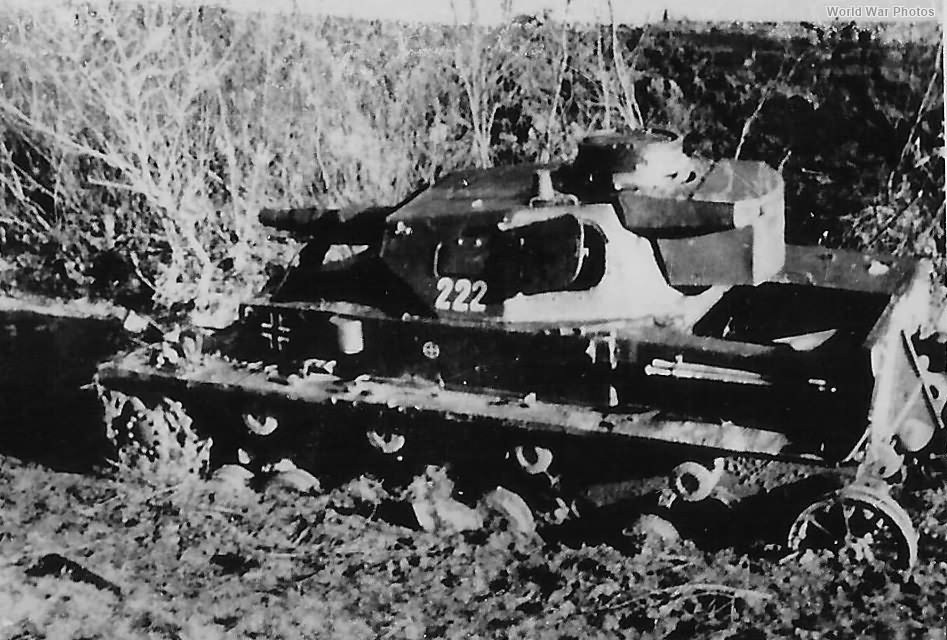The 13th Panzer Division was a German armored division formed in October 1940 in Romania, where it initially served as a training and instructional unit. The division’s establishment came from elements of the 2nd Panzer Division and other mechanized infantry units. Over its history, the division saw extensive action on the Eastern Front, from the invasion of the Soviet Union to the defense of Germany in 1945.
Formation and Early Structure
The original composition of the division included:
- Panzer Regiment 4 (two battalions) – originally from the 2nd Panzer Division
- Rifle Brigade 13, including:
- Rifle Regiment 66 (two battalions)
- Rifle Regiment 93 (two battalions)
- Motorcycle Battalion 43
- Aufklärungs Abteilung 13 (Reconnaissance)
- Artillery Regiment 13 (three battalions)
- Pioniere Battalion 4 (Engineers)
- Other divisional units numbered 13.
Eastern Front Campaigns
Invasion of the Soviet Union (1941)
The 13th Panzer Division took part in Operation Barbarossa, the German invasion of the Soviet Union in June 1941, moving from Romania into southern Russia. The division participated in the Battle of Kiev, contributing to the encirclement and capture of large Soviet forces.
Caucasus and Kuban (1942-1943)
From October 1942 to January 1943, the division was involved in the Caucasus Campaign, part of Germany’s drive toward the oil fields of the southern Soviet Union. After the failure of this offensive, the division withdrew and fought in the Kuban region until August 1943.
Dnepr and Krivoy Rog (1943-1944)
From October 1943 to January 1944, the division fought in the area of Krivoy Rog during the German defense of the Dnepr River. The division faced constant pressure from Soviet forces as the frontlines in Ukraine shifted westward.
By this period, the division’s organization was as follows:
- Panzer Aufklärungs Abteilung 13 (Reconnaissance)
- Panzer Regiment 4 (two battalions)
- Panzergrenadier Regiment 66 (two battalions)
- Panzergrenadier Regiment 93 (two battalions)
- Artillerie Regiment 13 (three battalions)
- Heeres Flak Abteilung 271 (Anti-Aircraft)
- Panzerjäger Abteilung 13 (Anti-Tank)
- Nachrichten Abteilung 13 (Signals)
- Panzer Pioniere Bataillon 4 (Engineers)
- Divisional HQ and support units.
Later War and Destruction
In May 1944, Panzergrenadier Regiment 1030 “Feldherrnhalle” was added to the division, but it was destroyed shortly after during heavy fighting in southern Ukraine. The division itself suffered severe losses and was sent back to Germany in September 1944 for refitting.
Hungary and Budapest (1944-1945)
In October 1944, after reconstitution, the division was sent to Hungary, where it participated in the defense of Budapest. In January 1945, during the Siege of Budapest, the division was destroyed. Despite this, the surviving elements were quickly reorganized into Panzer Division “Feldherrnhalle 2”, continuing to fight until the final collapse of Nazi Germany.
Final Composition (1944-1945)
By the time of its destruction in Budapest, the division consisted of:
- Panzergrenadier Regiment 66
- Panzergrenadier Regiment 93
- Panzer Regiment 4
- Panzer Aufklärungs Abteilung 13
- Artillery Regiment 13
- Heeres Flak Abteilung 271
- Other divisional support units.
The 13th Panzer Division was notable for its participation in some of the most critical and challenging battles on the Eastern Front, and its transition into Feldherrnhalle 2 reflected the desperate state of German armored forces in the final months of the war.
